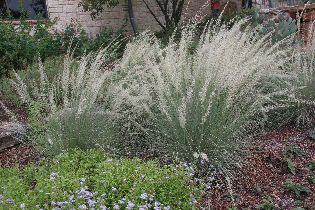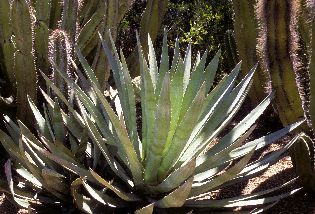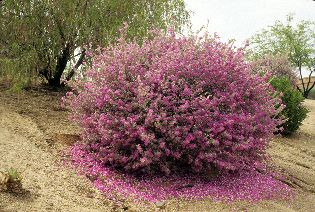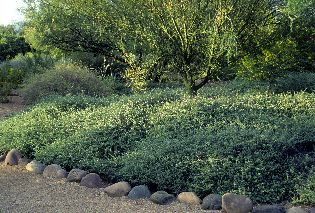Water-Thrifty Plants for Indian Wells Valley Landscapes
Welcome to Water-Thrifty Plants for the Indian Wells Valley. The information on this site is a guide to plants adapted to grow in the California High Desert. As demand on our region’s limited water resources increases, it becomes more important that we use our water wisely. Because more than half of residential water is used outdoors, choosing water-efficient plants for your landscape can make a big impact in reducing dependence on this valuable, irreplaceable resource. This site does not list all plants that will grow in the Valley, but includes those known to perform well in this region. Select from more than 240 plants with over 700 photos, listed in alphabetical order by their scientific (botanical) name. There are a number of ways you can access this information:Search By Plant Type
Click on the photos of Plant Types below to browse and review plants within a specific category.Advanced Filtering
Advanced Filtering allows you to find plants to fulfill a specific need, such as water use, height or width, flower color, bloom season and more. The more specific your selections, the fewer the plants sorted for your review. Reduce your criteria for more choices. Also, use this feature to search for plants by name—both botanic (Latin) and common names.Gardening Terms
Wondering what Low Water, Reflected Sun, Hardy to Cold and Canopy Coverage mean? Learn the basics of what a plant needs to grow successfully in your yard.Plant Types

Ornamental Grasses
Make no mistake, these grasses are not used as lawns. The seedheads and long leaves of ornamental grasses bring the element of movement to the landscape. They offer year-around interest with cooling shades of green in the spring and summer, followed by tans and browns during winter.

Cacti
Cacti are the heads-above favorites as water misers. Use them to add an explanation point in a design; many also produce incredible flowers. Thorns of many cacti make them excellent security barriers, but these same thorns require that you locate cacti carefully, away from outdoor areas and walkways.

Succulents
Succulents are among the best plants for providing a desert sense of place. Like cacti, because of their sharp thorns and spines, locate them with their mature size in mind. The sculptural qualities of succulents are unmatched, and the incredible variety of their shapes and sizes make them a designer’s dream.
Perennials
These are plants that live for more than one year, although many live for several years. Perennials are great choices for a new or renovated landscape—they add color and interest in a short time. Their wide range of forms allows their use as shrubs, groundcovers, or in containers. Many perennial wildflowers reseed so plantings continue for years.

Annuals
Annuals are plants that grow, flower, produce seed and die in one year. Annuals described here include both bedding plants and wildflowers. Bedding plants are planted from packs or containers. Wildflowers are typically planted as seeds where you want plants to grow. Annuals are temporary plants, so are not valid as Canopy Coverage in lawn replacement programs.



